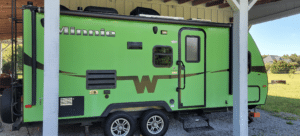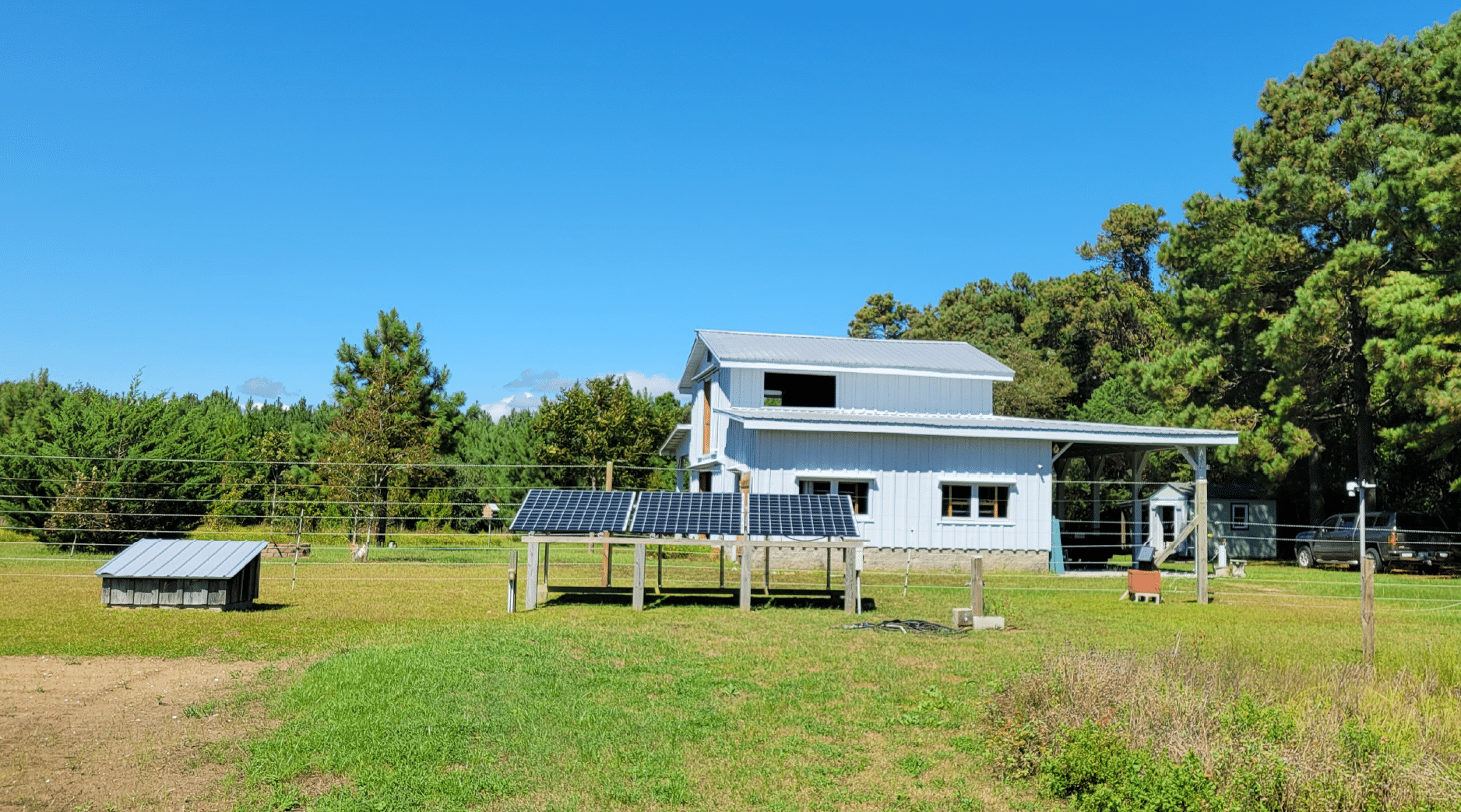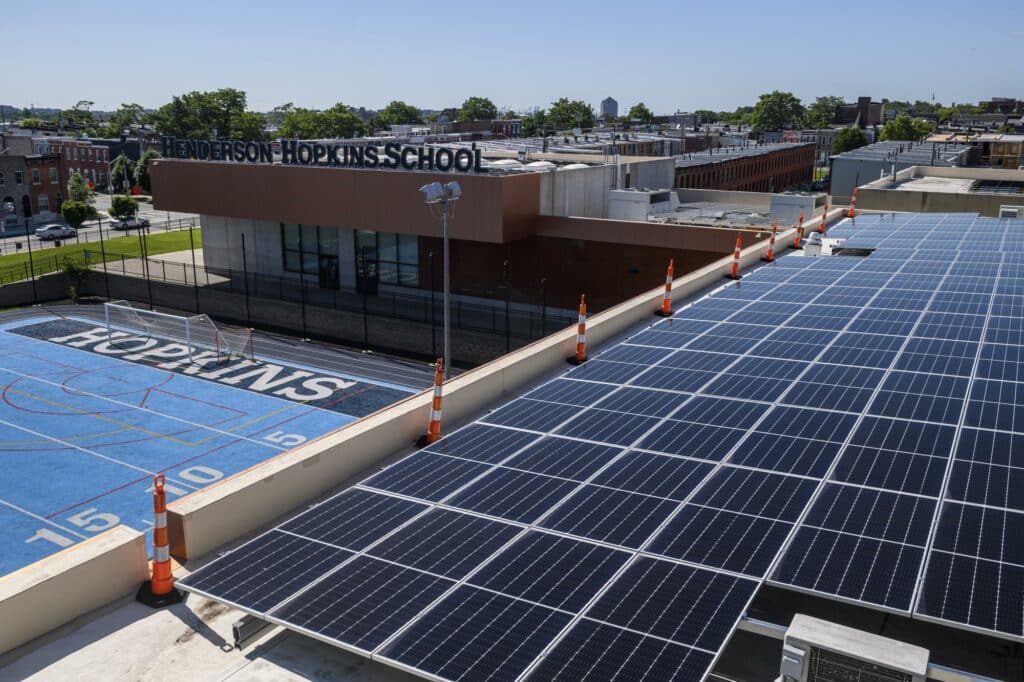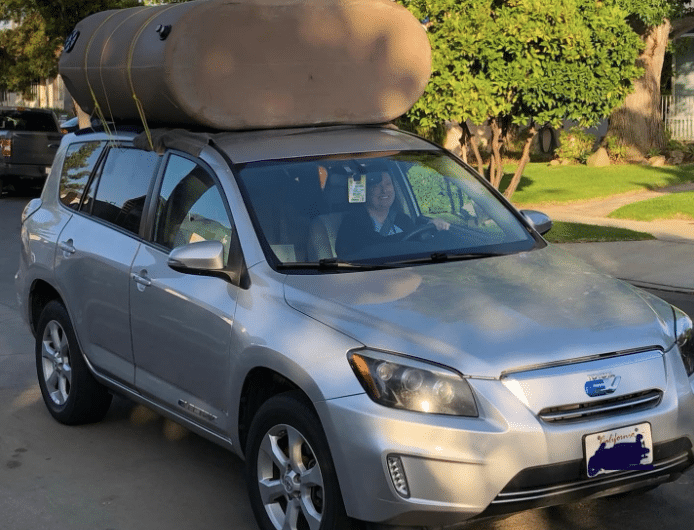Ocean Natural Farm, located in a rural section of coastal North Carolina, grows vegetables, fruit, and flowers. Not only does farmer Michael Murdoch rely on the sun to grow his organic certified produce, he also relies on the sun to power everything else on his 100% off-the-grid barn with six solar panels and two batteries. Michael shares how he saves money and farms sustainably with solar to protect his land and the planet.
——
 When I got a quote from our local utility to supply electricity to the barn at our farm, it was very high. Since my wife Deede and I had intentions to have a solar system anyway, we decided to go ahead and buy an off-grid solar system that I would install. After an extensive online search and many calls, we chose Backwoods Solar to supply the system. They did a great job recommending a system based on our particular needs with a focus on power for a drip irrigation system and power to the barn. The system, six solar panels and two 48-volt batteries, is paying for itself, and I’m saving even more money as I see area utility rates increase.
When I got a quote from our local utility to supply electricity to the barn at our farm, it was very high. Since my wife Deede and I had intentions to have a solar system anyway, we decided to go ahead and buy an off-grid solar system that I would install. After an extensive online search and many calls, we chose Backwoods Solar to supply the system. They did a great job recommending a system based on our particular needs with a focus on power for a drip irrigation system and power to the barn. The system, six solar panels and two 48-volt batteries, is paying for itself, and I’m saving even more money as I see area utility rates increase.
I’m from North Carolina, and a retired administrator from the parks system. I’ve been doing organic gardening all of my life and started Ocean Natural Farm about 10 years ago. The farm is about five acres, two of which are cultivated and three acres that are natural habitat and trails. I grow watermelons, tomatoes, cucumbers, persimmons, blackberries, blueberries, asparagus, garlic, okra, and more — which I sell at a local market. I also grow wildflowers for pollination and compost on the farm to enrich the soil.
I’m grateful for tax incentives that support low and middle income families and individuals. I would not have been able to do it without these funds.
I installed our first solar plus battery system in 2018. I went with a ground-mount solar array because I did not want hurricanes to interfere with a rooftop array. At the time, there was a 30% federal rebate for the project. Last year, knowing that rebates through the Inflation Reduction Act (IRA) continued to be available for solar and batteries, I installed six solar panels and a battery on my camper. We lose power four times each year, so the camper becomes our backup home when the power is down. My solar system for my camper cost about $4,000, $1,200 of which we will recoup through federal tax credits. I’m grateful for tax incentives that support low and middle income families and individuals. I would not have been able to do it without these funds. I support clean energy and anything we can do to move in the direction to reduce carbon emissions.
 Camper van with six solar panels
Camper van with six solar panels
Our home has high efficiency heat pumps and closed cell foam insulation, so it is already energy efficient. Everything in the barn is electric, and I’ve been replacing lawn maintenance equipment (line trimmer, blower, drills, hedge clippers) with electric ones over time. These are all powered by solar. Next, I would like to get an electric powered riding mower and the next car we buy will be electric. We may even look to expand our solar at the barn or at home.
I know we’re not changing the world on our own, but we believe in caring for our land and its wildlife and living sustainably. We are hopeful that we are setting the example and others will see this is possible. It is good for the environment and saves money. I have influenced at least one other company in the agriculture industry to add solar to their operations. My advice for someone considering solar is to study the latest trends with panels, inverters, and batteries. Everything has gotten easier and equipment is cheaper, especially with tax credits for solar panels, batteries, and installation. Ask around and consult other people who have done it.
My grandkids love the farm and I want to do it better for them. We have a responsibility to change our ways and be kinder to the earth. The best way that I can feel hopeful is to try to personally do what I can. Hopefully, my example will inspire others to do what they can.















